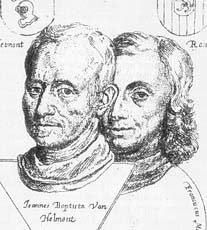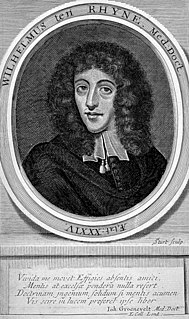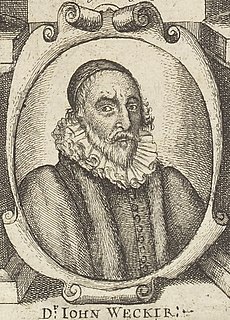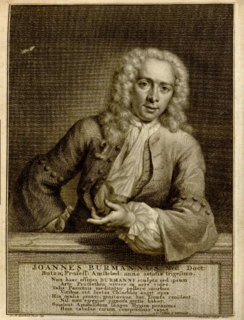This article presents lists of the literary events and publications in the 15th century.
Arthur Dee was a physician and alchemist. He became physician successively to Tsar Michael I of Russia and to King Charles I of England.
The 1711 Sales Auction Catalogue of the Library of Sir Thomas Browne highlights the erudition of the physician, philosopher and encyclopedist, Sir Thomas Browne (1605-1682). It also illustrates the proliferation, distribution and availability of books printed throughout 17th century Europe which were purchased by the intelligentsia, aristocracy, priestly, physician or educated merchant-class.

Jan Baptist van Helmont was a chemist, physiologist, and physician from the Spanish Netherlands. He worked during the years just after Paracelsus and the rise of iatrochemistry, and is sometimes considered to be "the founder of pneumatic chemistry". Van Helmont is remembered today largely for his ideas on spontaneous generation, his 5-year willow tree experiment, and his introduction of the word "gas" into the vocabulary of science.
The year 1604 in science and technology involved some significant events.

Girolamo Mercuriale was an Italian philologist and physician, most famous for his work De Arte Gymnastica.
The year 1500 AD in science and technology included many events, some of which are listed here.

Willem ten Rhijne was a Dutch doctor and botanist who was employed by the Dutch East India Company in 1673. In summer 1674 he was dispatched to the trading post Dejima in Japan. While giving medical instructions and taking care of high-ranking Japanese patients, ten Rhijne collected materials on Japanese medicine, especially on acupuncture and moxibustion.

Fasciculus Medicinae is a "bundle" of six independent and quite different medieval medical treatises. The collection, which existed only in two manuscripts, was first printed in 1491 in Latin and came out in numerous editions over the next 25 years. Johannes de Ketham, the German physician routinely associated with the Fasciculus, was neither the author nor even the original compiler but merely an owner of one of the manuscripts. The topics of the treatises cover a wide spectrum of medieval European medical knowledge and technique, including uroscopy, astrology, bloodletting, the treatment of wounds, plague, anatomical dissection, and women’s health. The book is remarkable as the first illustrated medical work to appear in print; notable illustrations include: a urine chart, a diagram of the veins for phlebotomy, a pregnant woman, Wound Man, Disease Man and Zodiac Man. In 1495, it appeared in Italian under the title Fasiculo de Medicina.

Soranus of Ephesus was a Greek physician. He was born in Ephesus but practiced in Alexandria and subsequently in Rome, and was one of the chief representatives of the Methodic school of medicine. Several of his writings still survive, most notably his four-volume treatise on gynaecology, and a Latin translation of his On Acute and Chronic Diseases.

Johannes Jacob Wecker was a Swiss physician and philosopher.

Johannes Burman, was a Dutch botanist and physician. Burman specialized in plants from Ceylon, Amboina and Cape Colony. The name Pelargonium was introduced by Johannes Burman.
Johann Georg Macasius (1617–1653) was a German physician. He was born in Eger, Bohemia.

Johannes Crato von Krafftheim was a German humanist and court physician to three Holy Roman emperors.

Joseph Duchesne or du Chesne (c.1544-1609) was a French physician. A follower of Paracelsus, he is now remembered for important if transitional alchemical theories. He called sugar toxic, saying: “Under its whiteness, sugar hides a great blackness.”

Johann Winter von Andernach was a German Renaissance physician, university professor, humanist, translator of ancient, mostly medical works, and writer of his own medical, philological and humanities works.
Events from the year 1305 in the Kingdom of Scotland.
The year 1571 in science and technology included a number of events, some of which are listed here.
John of Gaddesden (1280?–1361), was an English physician. He wrote a treatise on medicine called the Rosa Medicinæ.

Gian Giacomo Bartolotti was an Italian physician from Parma who practiced in Venice. He was the son of the physician Pellegrino Bartolotti, and a nephew of Francesco Bartolotti. He published a history of medicine of the period Opusculum de antiquitate medicinae.












